Interactivos?'18. Inhabiting RRRRubish - Selected projects
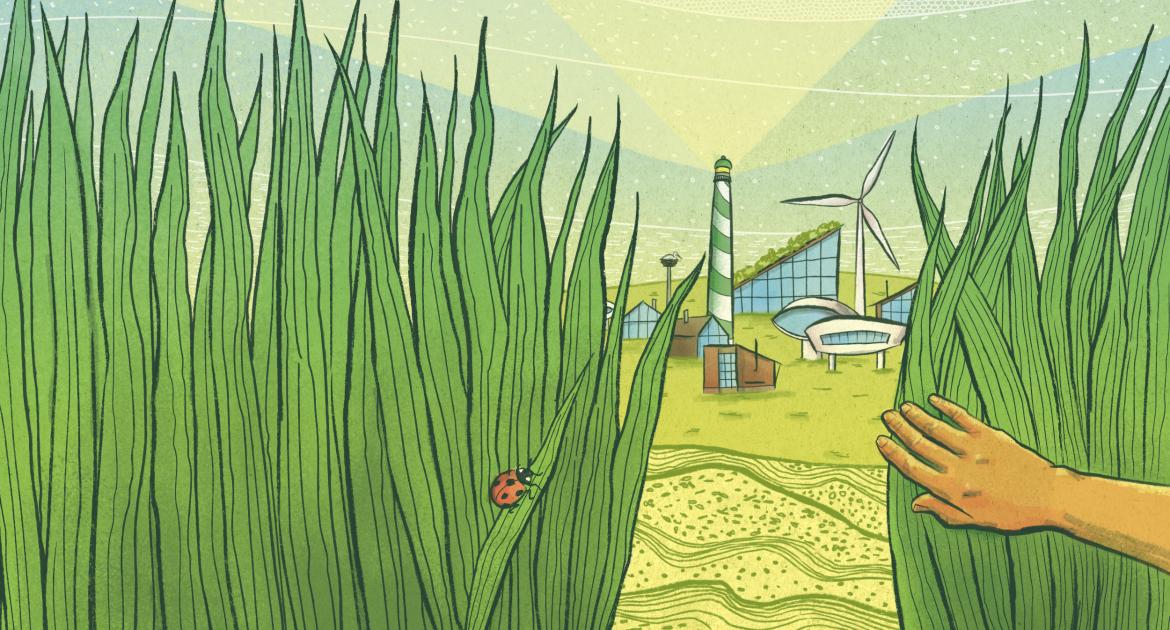
We present you the eight selected projects for the workshop Interactivos?'18. Inhabiting RRRRubish that are rehearsing or want to try new ways of seeing and approaching, in a creative and radical way, the exuberant mass of filth that envelops and intoxicates the planet and all its inhabitants.
The mentors of the workshop will be Franco Llovera, Cinthia Mendonça y Elizabeth Tyson
We encourage you to participate as a collaborator. You can do it until 8th May
Selected projects:
Scale biodigesters for the treatment of organic waste
Esther Casado and Lucía Suarez (Spain)
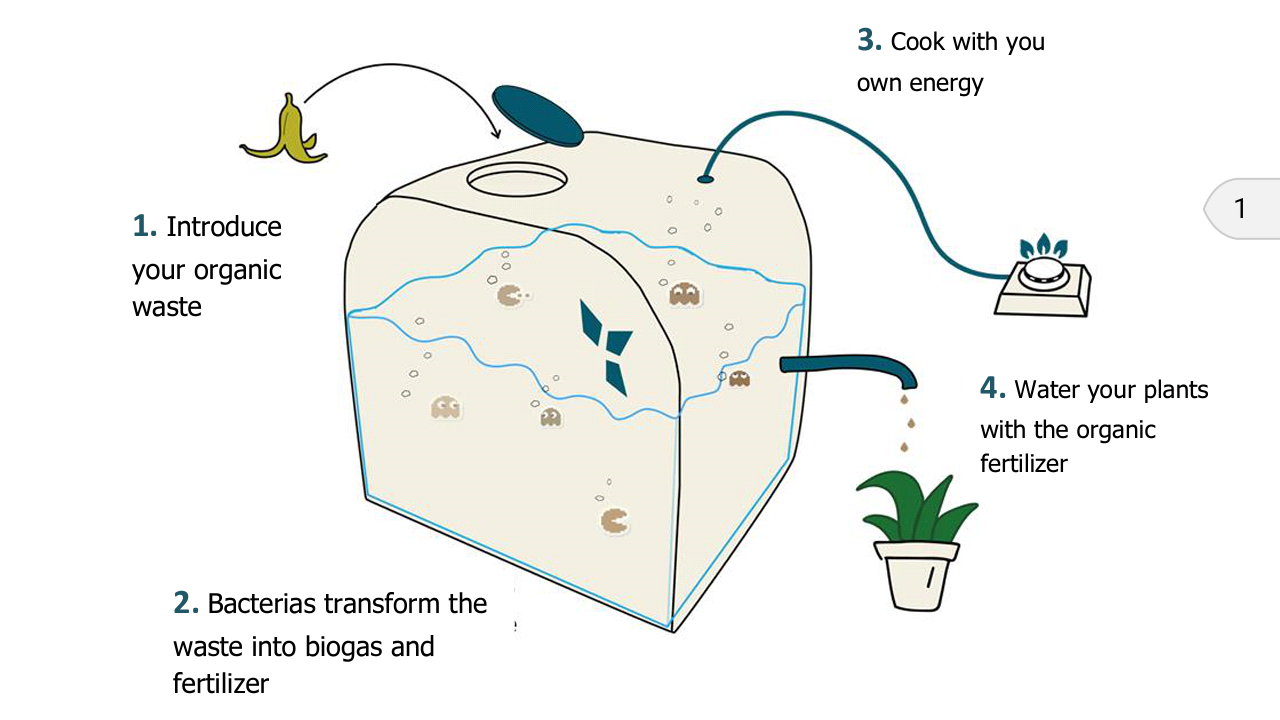
This proposal promotes the use of small scale biodigesters promoting circular economy models based on the valorization of organic waste, the production of renewable energy and organicfarming. We would like to present to this call the construction of a biodigester in a collaborative way. We understand that these simple equipments represent a solution for thewaste management and the protection of the environment as well as an energy solution.
On the other hand, small-scale biodigesters allow the users to benefit from both the energy generated and the fertilizer obtained, this saving is an incentive that will ensure a greaterinvolvement of them at the time of making a proper separation at source, thus closing the cycle of the nutrients included in the organic waste, promoting a circular economy model. The design of this biodigester is adapted to the specific circumstances of the project in order to make this process known among potential users. We believe that obtaining biogas from our waste is practically unknown in our society. That is why we want to extend this knowledge so that potential future users have the sufficient tools to autonomously replicate this prototype.
Incorporating Smart Technology in the Recycling Process
Juan Camilo Silva Riveros (Germany)
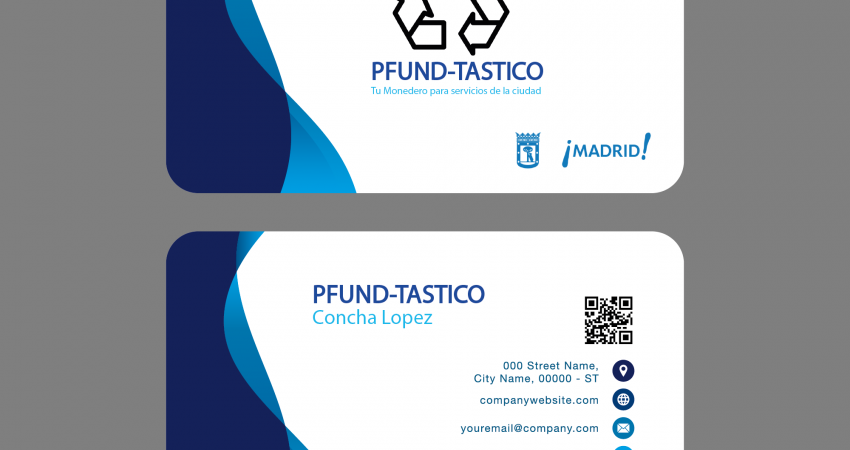
Pfand-tastico!
What is it?
Pfand-tastico is a system that enable the inhabitants to reclicate, changing their relationship withthe disposable trash (Plastic and Glass Bottles) That after used can become credits feeding a digital wallet that can be used in super markets and public services as transportation, food or withdraw money. This initiative propose to work together with beverage industry and include in the final consumer price a fee that will be return and in the incentive to transform the bottles life cycle and take them out of the trash pile, the Pfand-tastico has 3 basic processes:
1. Bottles pick-up process2. Bottles deliver in the reception point (markets, recycle hubs, malls)
3. Charge the digital wallet with credit.
4. Spend the money in city goods and services.
Why ?
This innovative models to incorporate inhabitants actions trough reward enab
Our vision, in short, is as follows: in order to develop a local community recycling program, we could give away smart cards (Pfand-tastic cards) to offer members of the community a way topay and recover their deposits for recyclables, while keeping track of their intake and their return. This traceability offers a great opportunity for local policies: the collected data can be used to design better waste management programs, to provide tax benefits, or to help in the estimation of the carbon footprint of the community. For the Interactivos 18, we would like to show a prototype of system that integrates IT and the concept of Pfand for recyclables. We will develop a scanner for recyclables marked with a symbol, which can communicate with the smart card. Alternatively, we could develop an app instead of using a smart card.
We need the help of collaborators in many different interdisciplinary areas. We believe that programmers, designers, social scientists, lawmakers, educators and many more would have a say on how to promote, improve and implement this system in a scalable way from
neighbourhoods to communities, from communities to cities, and from cities to countries.
Polymers extruder for 3d printing using recycled polymers
Julián Núñez de Villavicencio Castiñeyra (Colombia)
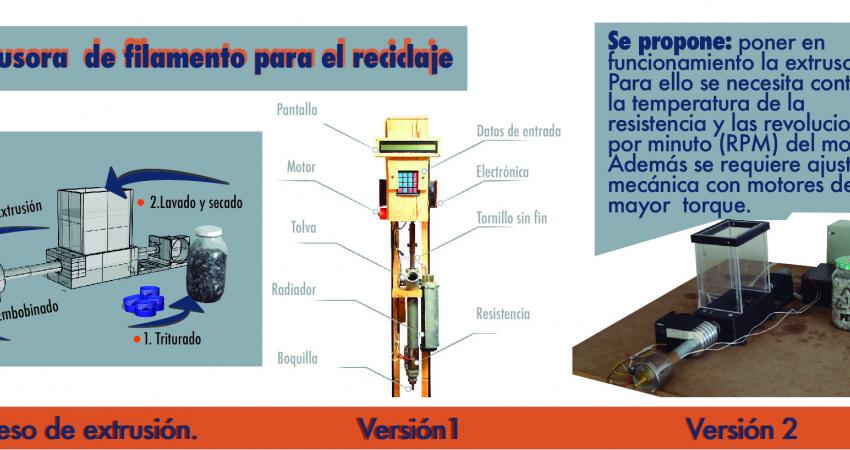
The polymers extruder serves the function of transforming polymers particles in a continous section of material. The present proposal is to use polypropylene recycled from the plastic lids from bottles, to be transformed in to a filament just like the one used by 3d printers, i.e. to transform a plastic waste into filament and the filament into anything we decide to print. For this stage of the project the polypropylene will be acquired from enterprises that work in process it and clean it.
We have, since 2 years ago, worked in 2 consecutive version of the design for the extruder. Version 1, the bigger of the two was builded with components repurposed during the Makino project in Venezuela. Since I've moved to Colombia I retook the idea of the extruder building Version 2, in which the mechanics were enhanced and the size was diminished which allows to work in smaller space.
General goal:
Building an extruder that uses recycled polymers.
Specific goal:
Design and build the mechanics of the extruder.
Design and ensemble the electronics.
Program the extruder
Calibrate and start runnings
Recycling and valorisation of plastic waste into ECOBOATS
Ismael Essome Ebone (Cameroon)
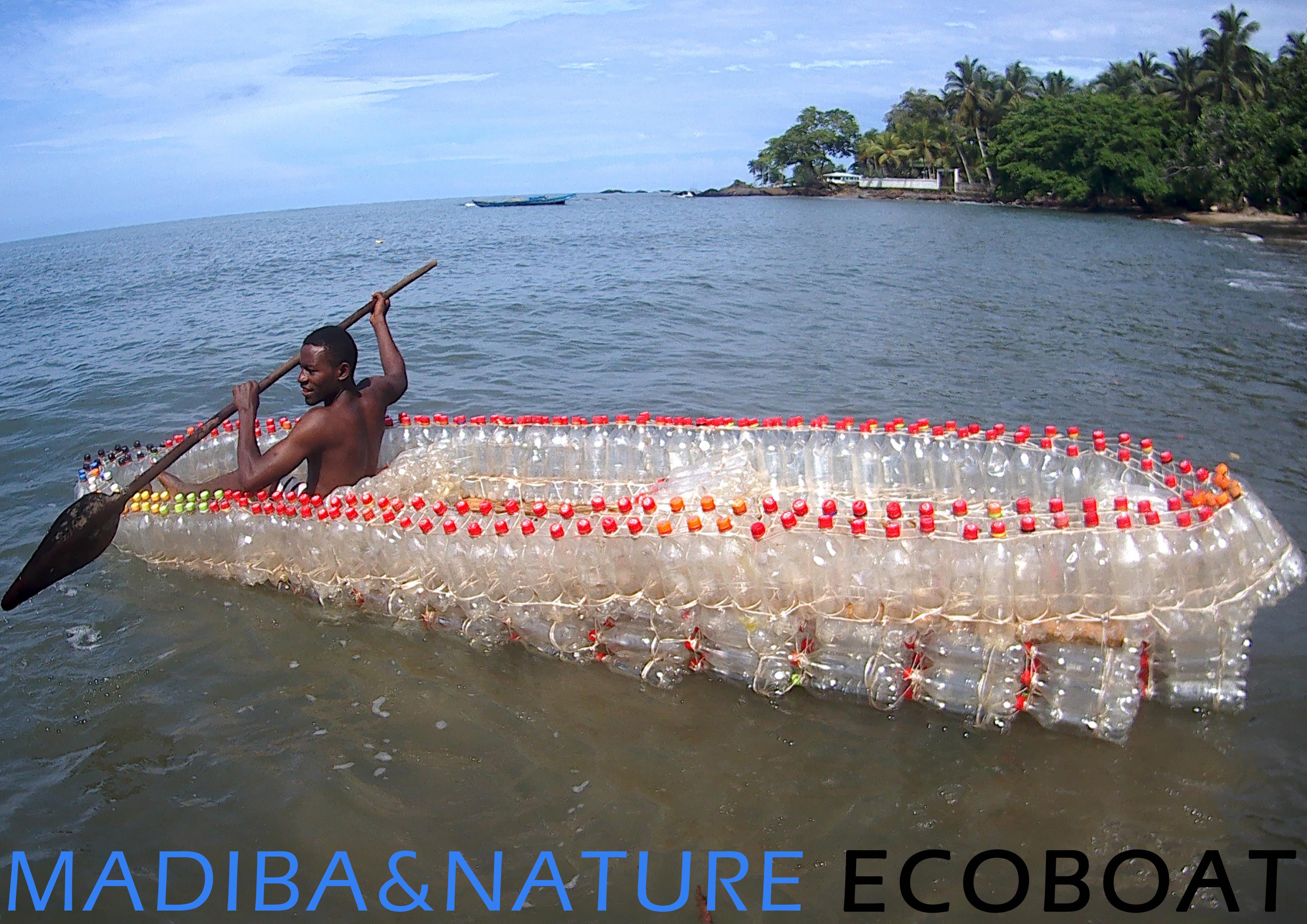
Madiba & Nature team will to work with the volunteers and participants during the workshop on the recycling and recovery of plastic bottles collected in the corners of Madrid into ECOBOATS. These ecological canoes will be used in any pond in Madrid to integrate this action of sustainable development into another economic vision of recycling for leisure..
Raeeciclaje
Miguel Cánaves (Argentina)
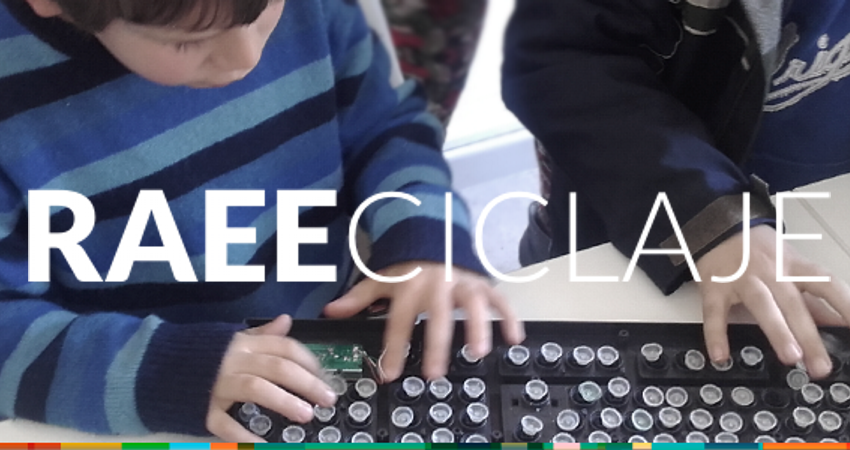
This project tries to give an educational utility to the WEEE of the Government of Santa Fe Province (or of the citizens in the province) by increasing the proportion of material recovered in the form of educational kits.
What do we understand by Educational Kits with WEEE?
They are kits composed mostly of recycled WEEE elements mostly used in schools to allow experimentation in electronics, robotics and programming. They must contain all the necessary components, even those that have to be printed in 3D, and a complete documentation for their assembly and commissioning.
Why increase the variety of kits?
Today we have designed and documented two (2) CNC Plotter kits that recover DVD readers, stepper motors, axes, belts and reductions of printers and CPU power supplies. This kits only uses a percentage of the elements that make up the WEEE. Although the recovered materials have a great utility, a lot of it is still going back to the deposit for it's final disposal.
That is why increasing the amount and variety of possible kits we will aslo be able to increase the percentage of recovered items. It also opens the possibility of new kinds of kits, like the assemble of musical instruments, toy cars, sensors, etc. rather than the CNC drawing machines.
The final product expected are educational electronics kits (at least two) composed mostly of easily retrieved WEEE, which include documentation with all the information necessary for its assembly (recovered parts, assembly process, list of necessary materials, utility, etc.).
We are convinced that, as is well expressed in Ifixit, recycling is not the solution but the last resource. To modify the amount of WEEE that is generated it is necessary to extend the period of usefulness of the objects, either repairing, reusing or renewing them to introduce them in different parts of the chain of use.
In the case of Ifixit, they act on the product in the innermost loop of the circular economy process. Instead RAEEciclaje does it from an outside position, since we proceed to REUSE the material with new purposes.
Kits example:
https://toolboom.com/es/video/cic-21-616-super-solar-recycler-diy-kit-6-in-1-video-review/
Eco RoboTótem
Interactivas? ( working group at Medialab Prado integrated by Joaquín R. Díaz (Joaku de Sotavento),Fabiola Simonetti, Patricia Nieto
Jone Ibabe, Eva Aro y Luisana Lara Briceño) (Spain)
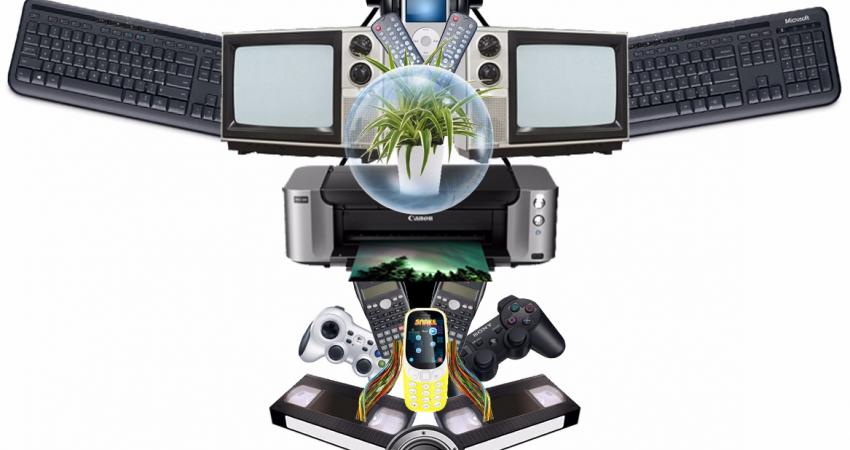
We will develop a robotic sculpture shaping as a cyber-Totem. The Eco Robo-Totem will be a kind of sculpture made with technological waste, which will interprets a data analysis of the pollution levels of Madrid. It will express this data through blinking LED lights, performing music and sounds and moving its mechanical parts. The robot is also home a for a little plant in it inside. The Robot-Totem itself take care of the plant, irrigating it and putting into the sunlight when it detects through its humidity and light sensor what the pant needs.
This project is a way to reconsider the data visualization, since the movements, sounds and lights that the robot performs are the expression of the pollution data with which the robot is fed.
Through the development of the project we pretend to develop creativity and cooperation behaviours, bringing basic knowledge in robotics, design and programming to the participants in the project.
Tool kit for construction with recycled material.
Carlos Corpa (Spain)
A set of techniques / tools to make simpler, quicker and more effective construction with waste such as tires, glass and PET bottles, bricks, drums, pallets ...
Few actions are able to gobble up as much garbage as the construction of buildings and none responds so literally to a call to inhabit the waste.
Packaging of all kinds (bricks, glass bottles, PET, cans, etc.) are needed by the thousands in such intervention, automatically changing from being garbage to being a resource. The same applies to old tires or plastic and metal drums. This project addresses solutions to the most common problems related to the use of this waste as bioconstruction material.
-calculator of units.
A digital tool that allows us to calculate the number of containers or tires needed for a particular task such as a wall or a dome. And that also works the other way around, allowing us to calculate the dimensions that we can create with a given number of containers.
-aircrete machine
The aircrete is a superlight cement achieved by injecting foam into the mixture. It can be prepared with different densities for different functions, has excellent insulating properties and multiplies the cement yield by between 4 and 10.
It can be ideal for filling tires with a fraction of the effort involved in filling earth and compacting a tire in the traditional way used in Earthsips, by pounding with a big hammer around the inside of the tire. It can also serve as a mortar for joining bottles and other containers in non-structural applications, for insulating fillers, for making wall plasters and a long etc.
https://www.earthshipglobal.com/earthship-images/bwtko6zxu4myncv1tf7vjl…
It consists of a foam machine driven by an air compressor, made with plumbing material, and a dosing gun that introduces that foam into the concrete mixer or into the container where the cement mixture is prepared. This mixture can be poured, projected, pumped or spatula applied as normal cement.
https://www.youtube.com/watch?v=_NYAv2sMm1c
http://www.domegaia.com/tools.html
- master rule for domes
It consists of a measuring instrument that sits in the center of a circular or spherical construction to indicate position and / or angle of the units (tires, bottles, bricks ...) that constitute it.
https://i.pinimg.com/originals/78/32/2b/78322ba4a49540e96d4420bb83172fd…
https://i.pinimg.com/564x/12/87/64/128764948dd6711ef80da5be1783a8db.jpg
-pallet buster
A lever specially designed to remove pallets effortlessly and reuse their wood.
(google image search "pallet buster")
Random hacking machine
Fred Paulino (Brasil)
The functioning of the contemporary world is based on a complex network that, supported under the technological apparatus, reveals a paradox: the more organized and controlled its technical and social structures are (including monitoring our existence in real time), the more chaotic the human flow is revealed (between privacy and exhibitionism, is it possible to rely on networks?). Under this supposed order is also the management of the waste generated by such sophisticated dynamics: while government recycling programs and independent garbage collection initiatives are increasingly common and more standardized – including the use of technology for monitoring of such processes –, more unlimited appears to be waste generation. The pace of care seems to be insufficient in the face of the lack of control. We often have the illusion that technology allows the organization of all social processes and improvement of the quality of life of populations when, in fact, it can only be more enslaving and legitimizing the benefits of privileged ones. The harmful action of anthropocentric man on nature seems to surpass the technical sophistication achieved by our species.
Machines’ efficiency has always been whether celebrated or questioned by artists. Among the questioners, one name draws attention: the American cartoonist and sculptor Rube Goldberg, who in the first decades of the twentieth century became notorious for designing literally useless machines: “a deliberately complex contraption in which a series of devices that perform simple tasks are linked together to produce a domino effect in which activating one device triggers the next device in the sequence” (from Wikipedia). These structures became known as Rube Goldberg Machines and have since then emerged in different contexts: in the art world (such as in the video The Way Things Go, by the Swiss duo Fischli & Weiss), in science (entrance of San Jose Tech Museum), in the nerd universe (there are contests of creation of these machines in North American Universities), in the entertainment industry (Viva Pitagoras TV show) or even in the advertisement industry (see the celebrated commercial of Honda). The fact is that these complex and creative gadgets illustrate, in some way, the failure of our world organization. What is so much technology actually about?
As a response to the Rube Goldberg machines in the context of a world without control, the Gambiologia Collective, a project that emerged in Brazil in 2008, developed, in its trajectory, installations inspired by such gadgets, bringing their (anti) logic to the electronic context. They’re the Random Gambièrre Machines. Gambièrre refers to the fictitious patron of Gambiologia (Jean Baptiste Gambièrre), and his name derives from the word "gambiarra". In Brazilian Portuguese, it denotes an improvised adaptation, using the available (and scarce) material resources for solving an everyday problem. Gambiologia, which later became a larger project, with the involvement of dozens of collaborators from different countries around collective initiatives, is inspired by the “gambiarra” tradition for the creation of works and projects in art and technology. Instead of the precise sequence of Rube Goldberg Machines and the use of specific materials for their assembly, gambiological machines operate randomly, microcontrollably, and are entirely made from waste transformed into artworks. The purposes of both, however, are the same: the creation of a complex and useless machine, which questions and mocks the supposed technology-enabled world organization.
The process of creating a Random Gambièrre Machine is like a "hackaton of objects". Reused materials that have peculiar aesthetic or functionality are collected from flea markets, junk yards, thrift stores and trash bins. These pieces are taken to the gallery (or assembly space) and so are integrally transformed, circuit-bent, recombined, remixed and upcycled with the installation of electronics, becoming parts of a great techno-assemblage. No object remains original: they are all subverted, modified, hacked, and in the end, randomly controlled by a "microcontroller-brain".
The Random Gambièrre Machine is the pre-apocalyptic response to a society that cries out for organization and connectivity without, however, worrying about what is most crucial: quality of life and care for the globe. By bringing a mass of "genetically modified" waste into an institutional space, the work problematizes not only the over-organized functioning of contemporary technological society, but also our conviviality with the waste generated by our passage through the planet. The work, in its multiplicity of electronic elements, objects and wires, still suggests the interior of a complex technological system: the opening of a black box that holds within itself our own guts. All this smartly, in a good mood and with great aesthetical impact.
This project intends to setup a Random Gambiérre Machine (here called Máquina Aleatoria de Hackeo) at Medialab-Prado during Interactive '18. Such installation will be done collectively by the proponent, the collaborators and also by frequenters, in an open collaborative and procedural workshop format.
As unbridled technological development has an increasing impact on nature, we shall be creative about what to do with the remains of the consumption cycle. For this, technology must be under our control, under the risk of, in the near future, we drown in our own remains as we post, smiling, the next selfie.
“If we are drown in garbage, if the anthroposcene is on the agenda of philosophical, ecological and technological discussions, (…) gambiologia reveals the most concrete of our existence: the search for perfection and for the formula of life in the sciences on one hand, and an increasingly destroyed and trashed world, on the other. (…) The trash is our open guts, our main production, with which we cover the world.” (Raquel Rennó, Gambiólogos exhibition catalogue, 2014).



 Medialab-Matadero Madrid
Medialab-Matadero Madrid